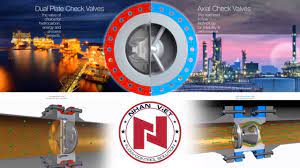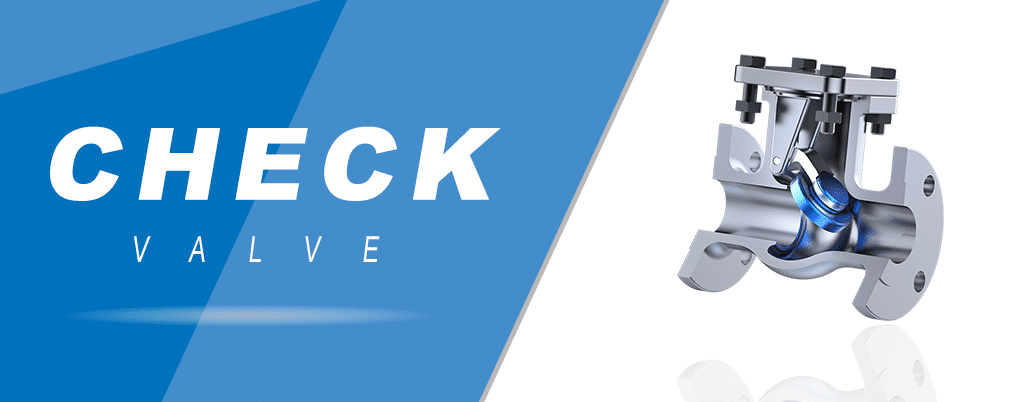Check Valves in Vietnam

by nhanvietjsc
Overview Check Valves
Check Valve (Van một chiều) a valve that closes by fluid pressure to prevent return flow
(Mechanical engineering: Fluid engineering)
A check valve is a valve that is closed by the pressure of a fluid so that the fluid does not flow back in the direction it came from.
Check valves to ensure that fuel flows in only one direction, thus avoiding contamination.
The special coupling device contains a check valve that allows fluid to pass downward but not upward through the casing.
A check valve is a valve that is closed by the pressure of a fluid so that the fluid does not flow back in the direction it came from.
A check valve, one-way valve, reflux valve, retention valve, foot valve, or no-return valve is a valve that regularly allows fluid (liquid or gas) to flow through it in only one direction.
Check valves are two-port valves, one for fluid to enter and another to leave. There are different types of check valves used in a wide variety of applications. Check valves are often part of common household items. Although they are available in a wide range of sizes and costs, check valves generally are very small, simple, and inexpensive.
Check valves operate automatically and most are not controlled by a person or any external control; accordingly, most do not have any valve handle or stem. The bodies (external shells) of most check valves are made of plastic or metal.
An important concept in check valves is the cracking pressure which is the minimum differential upstream pressure between the inlet and outlet at which the valve will operate. Typically, the check valve is designed for and can therefore be specified for a specific cracking pressure.
Check valves, also known as non-return valves or one-way valves,
are designed to allow the flow of fluid in one direction while preventing backward flow. There are several types of check valves, each with its own design and application. Here are some common types:
Swing Check Valve:
Design: It has a hinged disc or flap that swings open in the direction of flow and closes to prevent backflow.
Application: Suitable for applications with moderate flow rates.
Lift Check Valve:
Design: It contains a disc that is lifted from the seat to allow flow and drops back onto the seat to prevent reverse flow.
Application: Commonly used in vertical flow applications.
Ball Check Valve:
Design: Consists of a ball that moves up and down in response to fluid flow. The ball lifts to allow flow and falls back to its seat to block reverse flow.
Application: Suitable for applications with low to moderate flow rates.
Dual Plate Check Valve:
Design: It has two plates that open in the direction of flow and close to prevent backflow. This design is more compact than traditional swing check valves.
Application: Used in applications with limited space and high flow rates.
Tilting Disc Check Valve:
Design: Features a disc that tilts to allow flow and returns to a horizontal position to prevent reverse flow.
Application: Commonly used in high-pressure systems.
Diaphragm Check Valve:
Design: Uses a flexible diaphragm to allow forward flow and prevent backward flow.
Application: Suitable for applications where a soft-seated valve is required.
Stop-Check Valve:
Design: Combines the functions of a lift check valve and a globe valve. It can be locked in the open position to allow flow or used as a regular check valve.
Application: Used in applications where flow direction needs to be controlled.
In-line Check Valve:
Design: Installed in a pipeline and allows flow in one direction only.
Application: Commonly used in water and wastewater systems.
The selection of a check valve depends on factors such as flow rate, pressure, the direction of flow, and the specific requirements of the application. Different industries and applications may require different types of check valves to ensure optimal performance and reliability.
Recommended Posts

Comeca GEMSTART UNIVERSE Product list in Vietnam Market
October 7, 2019
Valves for Large-Bore Diesel Engines As-Schneider
October 6, 2019




